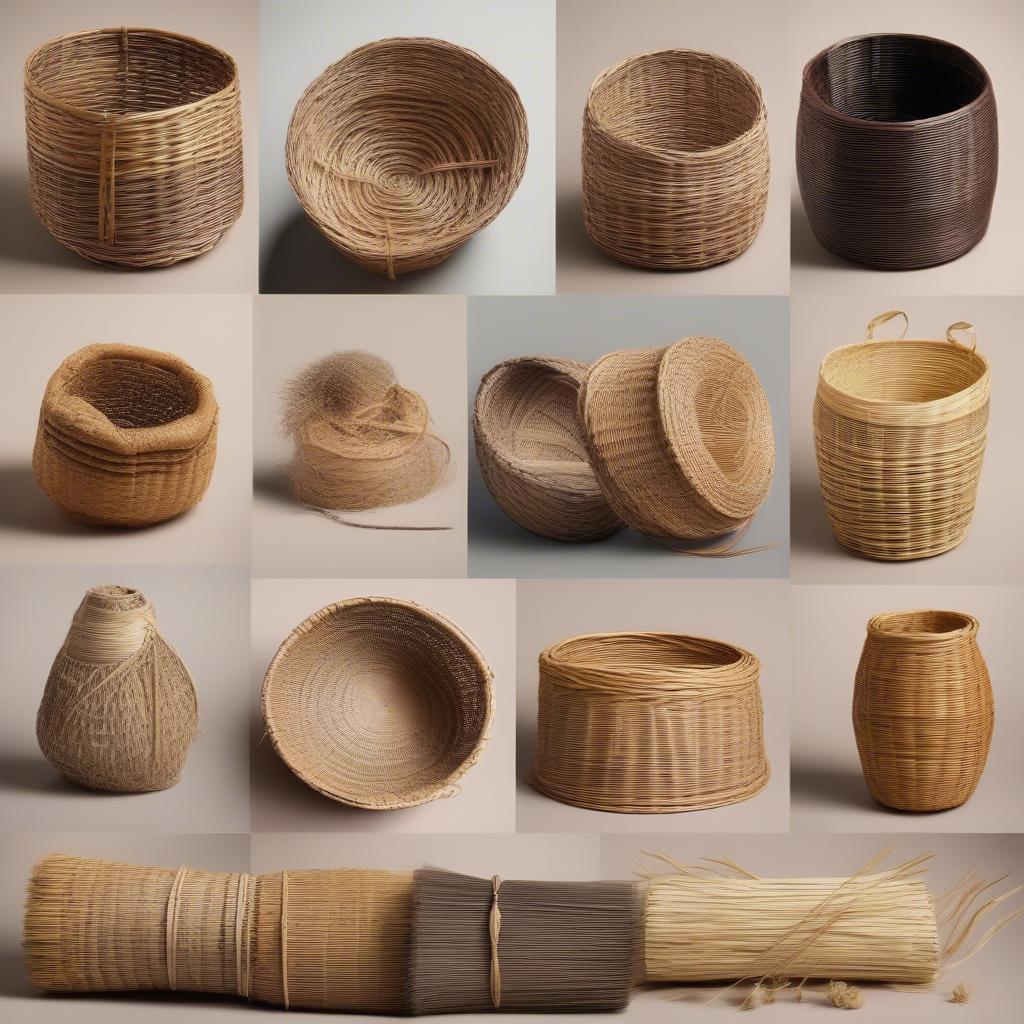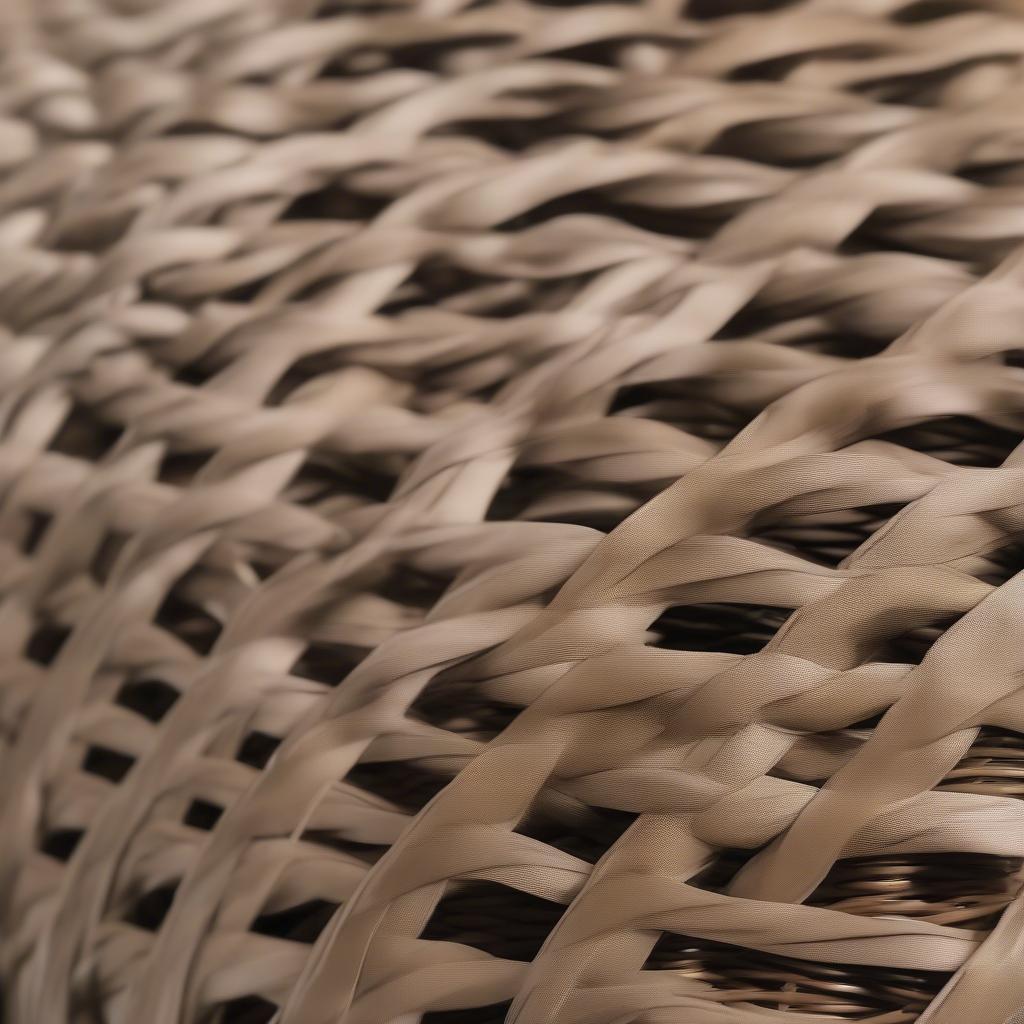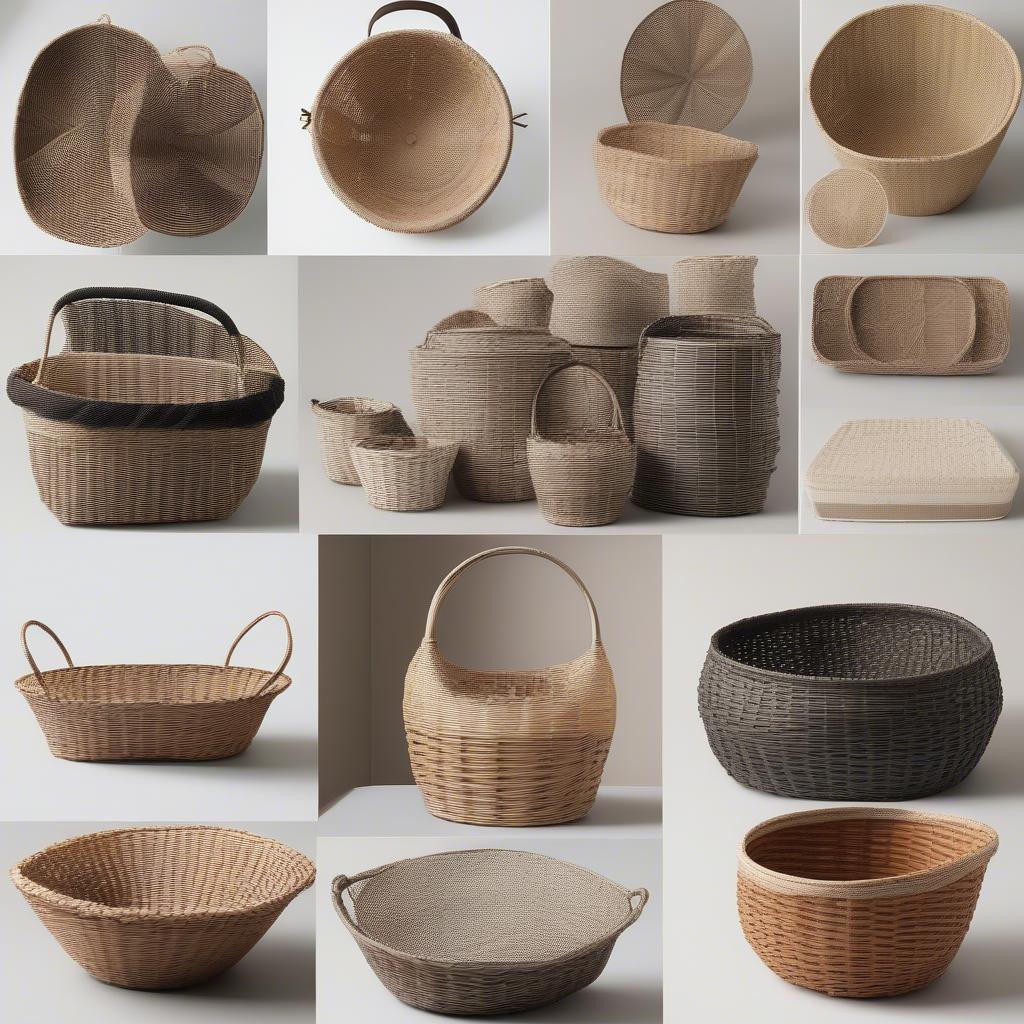Basket Weaving
What Are Weaved Baskets Made From?
Weaved baskets are crafted from a variety of materials, both natural and synthetic. Understanding the different materials used helps appreciate the craftsmanship and choose the perfect basket for your needs. This article explores the diverse world of basket weaving materials, from ancient techniques to modern innovations.
Decoding the Materials of Weaved Baskets
From the flexible willow to the sturdy rattan, the materials used in basket weaving define the basket’s character, durability, and aesthetic appeal. Let’s delve into the fascinating world of these materials.
Natural Wonders: Exploring Traditional Basket Weaving Materials
Natural materials have been the cornerstone of basket weaving for centuries. Their inherent beauty and unique properties bring a touch of nature into our homes.
- Wicker: Not a material itself, wicker refers to the weaving process and style. Wicker baskets can be made from a variety of materials, including willow, rattan, reed, and even bamboo. The flexibility of these materials allows for intricate designs and shapes.
- Rattan: A strong, vine-like material from Southeast Asia, rattan is prized for its durability and resistance to splitting. Its natural sheen adds an elegant touch to any basket. Rattan is ideal for larger baskets and furniture.
- Willow: Known for its flexibility and slender form, willow branches are a classic choice for basket weaving. Its light color and delicate texture create beautiful, airy baskets, often used for gathering flowers or displaying fruits.
- Reed: A tall, grass-like plant, reed provides a sturdy and versatile material for basketry. It is commonly used for larger baskets, mats, and even some types of furniture.
- Bamboo: Known for its strength and fast growth, bamboo is a sustainable choice for basket weaving. It offers a unique aesthetic with its distinct segmented appearance.
- Seagrass: A durable and water-resistant material, seagrass lends a coastal vibe to baskets. Its natural variations in color add visual interest and texture.
- Banana Leaf and Fiber: These versatile materials are often used in creating unique and eco-friendly baskets. They offer a rustic charm and are surprisingly strong.
 Natural Basket Weaving Materials: Willow, Rattan, Reed, Bamboo, Seagrass
Natural Basket Weaving Materials: Willow, Rattan, Reed, Bamboo, Seagrass
Modern Materials: Innovation in Basketry
While natural materials hold a special place in basket weaving, modern materials offer new possibilities in terms of durability, color, and design.
- Synthetic Wicker: Made from polyethylene or PVC, synthetic wicker is weather-resistant and easy to clean, making it ideal for outdoor use. It offers a similar look to natural wicker but with added durability.
- Recycled Plastics: In an effort towards sustainability, recycled plastics are increasingly being used to create durable and eco-friendly baskets.
 Synthetic and Recycled Basket Materials: Polyethylene Wicker, Recycled Plastic
Synthetic and Recycled Basket Materials: Polyethylene Wicker, Recycled Plastic
Choosing the Right Basket: Material Matters
Understanding the characteristics of different basket weaving materials allows you to choose the perfect basket for its intended use. Consider factors such as durability, weather resistance, and aesthetic appeal when making your selection.
What are the Strongest Materials for Weaved Baskets?
Rattan and bamboo are known for their exceptional strength and durability. They are excellent choices for baskets that will hold heavier items or experience regular use.
What Materials are Best for Outdoor Baskets?
Synthetic wicker and recycled plastics are ideal for outdoor use due to their weather resistance and ease of cleaning.
 Various Weaved Baskets Made from Different Materials
Various Weaved Baskets Made from Different Materials
Conclusion: A World Woven Together
Weaved baskets are more than just functional containers; they are pieces of art, reflecting the skill of the artisan and the beauty of the materials used. From the classic elegance of willow to the modern practicality of synthetic wicker, understanding what weaved baskets are made from allows you to appreciate the rich tradition of basketry and choose the perfect basket to suit your needs.
FAQs
- What is the difference between wicker and rattan? Wicker refers to the weaving style, while rattan is a specific material often used in wickerwork.
- Are weaved baskets eco-friendly? Baskets made from natural, sustainably harvested materials like willow, rattan, and bamboo are considered eco-friendly.
- How do I care for my weaved baskets? Proper care depends on the material. Natural baskets should be kept dry and away from direct sunlight. Synthetic baskets can often be cleaned with soap and water.
- What are the most common uses for weaved baskets? Weaved baskets are used for storage, decoration, gift-giving, and even as fashion accessories.
- Where can I buy high-quality weaved baskets? You can find beautiful, handcrafted baskets at artisan markets, specialty stores, and online retailers.
- Are all weaved baskets handmade? While many weaved baskets are handmade, there are also machine-made options available.
- Can I learn to weave baskets myself? Yes! Many resources and workshops are available for those interested in learning the art of basket weaving.
For further assistance, please contact our Hotline: +84 388 951 999, or visit our offices in Hanoi, Vietnam or Tech Avenue, Suite 12, San Francisco, CA 94105, USA. We have a 24/7 customer service team ready to help.
